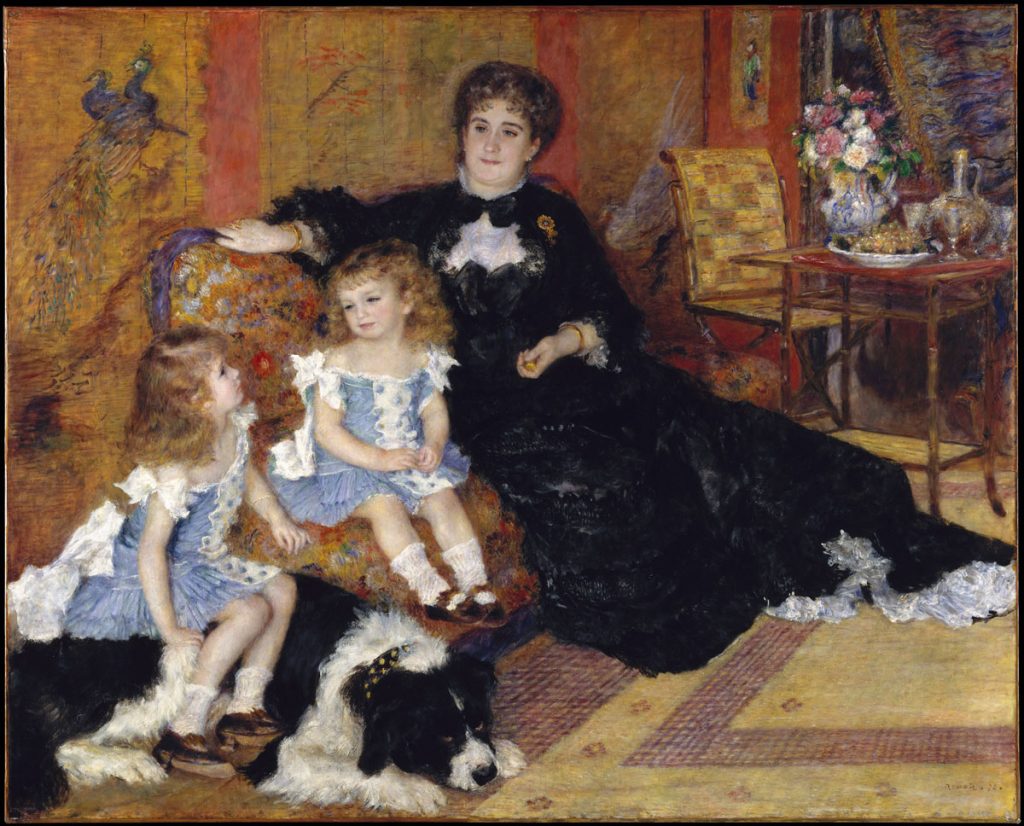What are the dog days of summer? Generally speaking, they’re the hottest days of the season. But here at the Art Docent Program, we’re taking that phrase to a whole new level today, and choosing to celebrate a few paintings featuring humans’ best friends!
We love pets, so much so that we’ve included a first-grade unit on pets in our curriculum, and a TK unit on dogs and cats, respectively. It’s fascinating to see how depictions of pets have both changed and remained the same over time. Without further ado, here are five works of art we’ve chosen to look closer at for our own, literal “dog days of summer.”
The Arnolfini Portrait, Jan Van Eyck, 1434
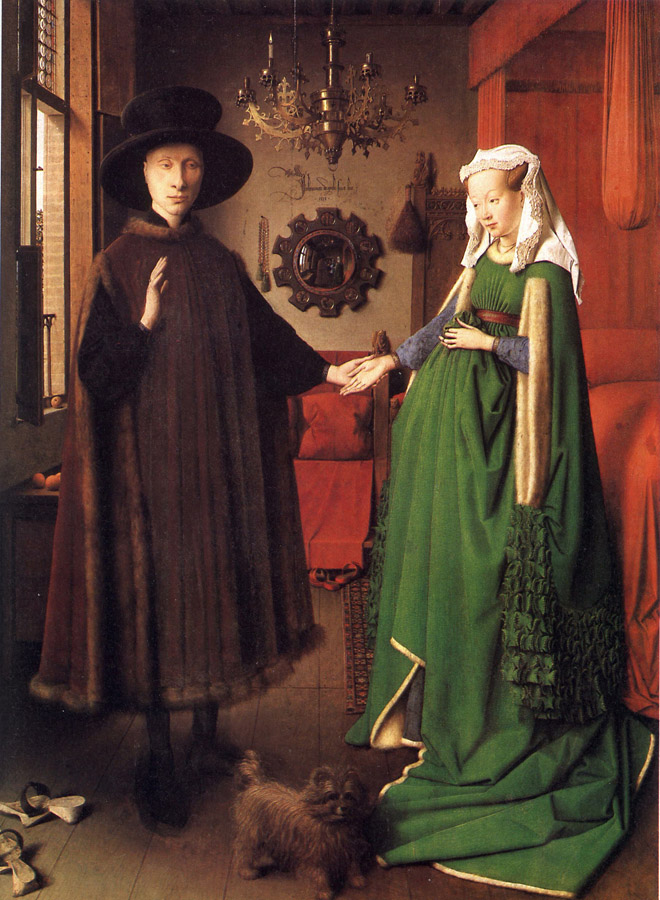
Featured in our sixth-grade curriculum, the Arnolfini Portrait (also called the Arnolfini Wedding) has plenty of detail…including a small lap dog at the couples’ feet. Like many of the details in this painting, the dog acts as a symbol. Dogs were often symbolic of loyalty (which is a pretty accurate assessment as far as dog behavior goes: remember the last time your dog followed you around everywhere because they wanted to be near you?) . In wedding paintings like the Arnolfini Portrait, dogs were included as symbols of fidelity and faithfulness.
Aldrovandi Dog, Guercino, c. 1625
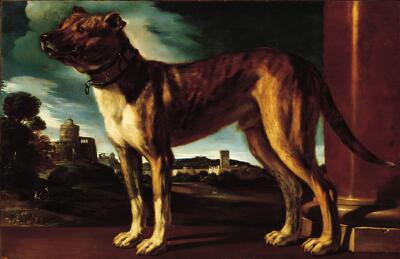
Upon visiting Pasadena’s Norton Simon museum, this Baroque painting is sure to catch your eye. It’s large and impressive, almost more so than some of the portraits you’ve walked by before encountering this work. According to the Norton Simon, this is the portrait of a specific dog, most likely a favorite of Count Filippo Aldrovandi, the patron whose coat of arms is painted on the dog’s collar. With its dramatic background of rolling clouds, it makes other dog portraits look infinitely less majestic by comparison.
My Best Friend, John George Brown, c.1903
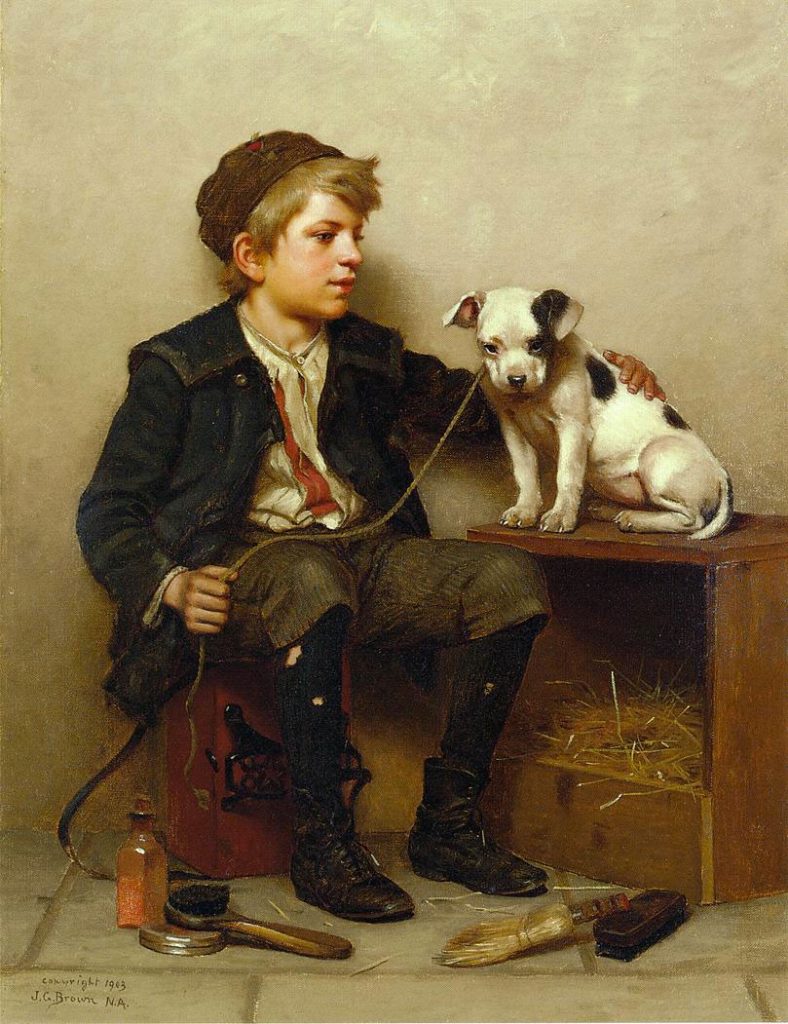
This painting, featured in our TK curriculum, wins all the cuteness awards. The dog sits on its bed as his master polishes his shoes, waiting to presumably be taken for a walk as the pup is wearing his leash. The boy’s ill-fitting and torn clothes and slightly ragamuffin appearance suggest that his dog might just be his most prized possession. Cue the “awww”s.
A Friend In Need (Dogs Playing Poker), Cassius Marcellus (C.M.) Coolidge, c. 1903
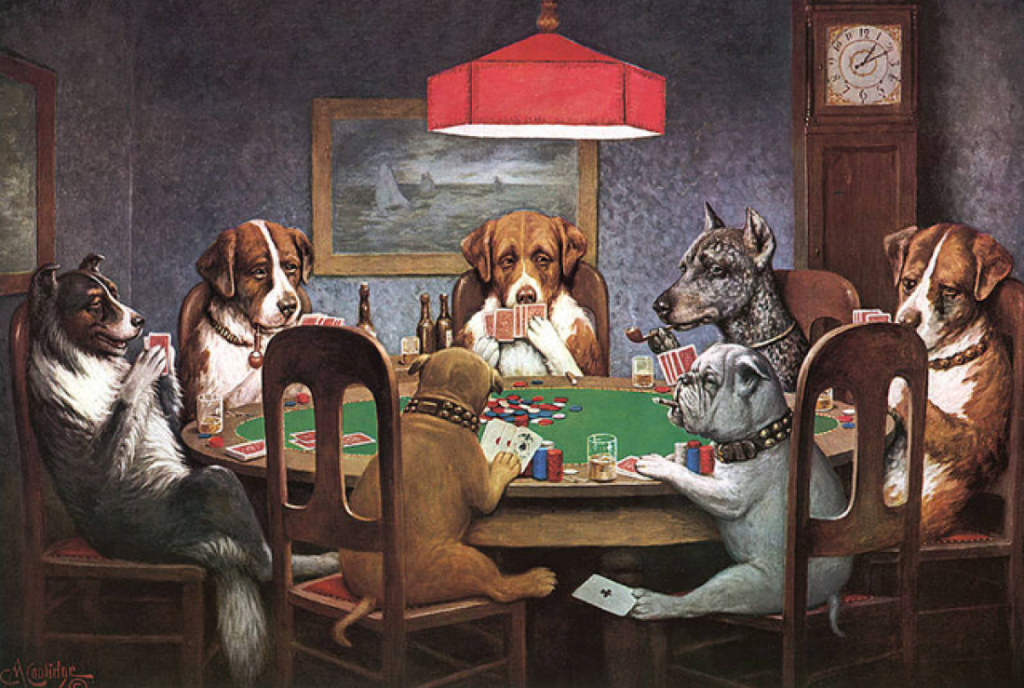
You know it as a cultural icon, meme, and a synonym for bad taste and kitsch. But what you might not know about the painting known as “Dogs Playing Poker” is that a), it’s part of a series, and b), it might have been a satirical commentary. C.M. Coolidge originally created these paintings to act as illustrations for the lids of cigar boxes for the Brown & Bigelow Company. They were then reproduced as posters.
As we’ve learned from our blogger’s favorite podcast, The Art History Babes, the most famous image in the series is actually titled “A Friend In Need,” and, upon closer inspection, it’s actually an image of dogs cheating at poker – the bulldog is slipping a card to the dog to his left. Three more paintings in the series continue the narrative pictured here, titled “A Bold Bluff,” “Waterloo II,” and “Pinched with Four Aces.” (The latter is especially interesting, if not outright comical: it features dog cops busting up the poker game.)
Interestingly, as we learned from The Art History Babes, scholars have posited that the kitschy works might have also functioned as a satirical commentary on the upper class. What do you think of this suggestion?
What do you think about our dog days of summer choices? Comment with your favorite work of art featuring a pup below!
What do we do here at the Art Docent Program? Discover more about us and our curriculum here!
Want more fun art articles? Check out our blog archives for more!
Don’t forget to follow us on Facebook for updates and more posts!
Fascinating by dogs playing poker? Listen to The Art History Babes’ episode on the series here. [Note: the podcast contains NSFW language, just a heads-up in case you’re listening in the workplace or with kids.]
Learn more about your dog’s behavior (i.e., why, exactly, does my dog follow me everywhere?) at Mypetneedsthat.
